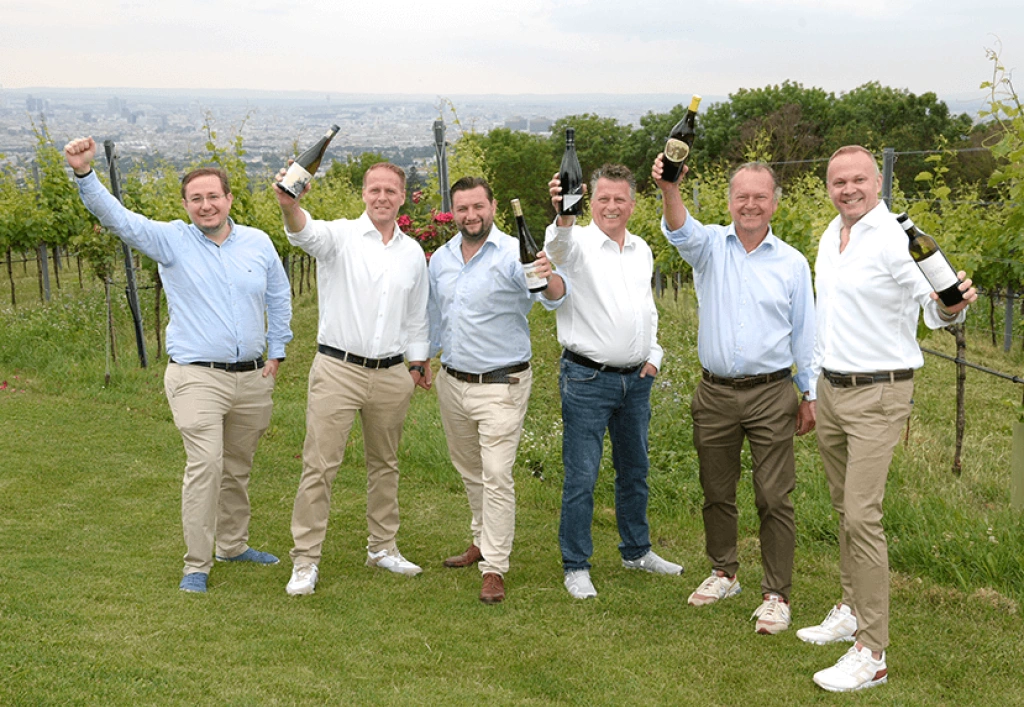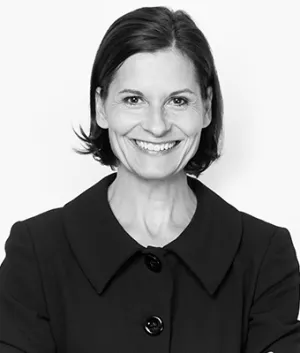
Wiener Gemischter Satz: Viennese wine guarantees the future

The renowned WIENWEIN winemaking group has turned Vienna's most popular speciality wine into a success story. Now they see it as the answer to climate change.
Wiener Gemischter Satz (Viennese blend) is going global! Known as a "field blend", this Viennese method involves planting several grape varieties in the same vineyard and processing them together. Now, increasing numbers of winemakers from the USA and Australia are coming to Austria's capital to learn in situ how to do it properly.
The future of Viennese viticulture begins now
There are two good reasons for the worldwide interest. Firstly, Wiener Gemischter Satz is one of the most amazing success stories in the wine world. Twenty years ago it had almost disappeared before it was rediscovered by the WienWein group and had a meteoric rise to become an internationally sought-after speciality wine. Secondly, however, it is becoming increasingly apparent that the field blend could be an answer to climate change, according to the group's chair Rainer Christ. "Climate change does not simply mean that it is getting warmer. Rather, the extremes in particular are becoming more frequent and stronger. This has already been clearly demonstrated. From October 22 to March 23 it was very very dry, while the months of April and May were cooler and wetter than ever before. Climate change means extreme fluctuations – not to mention heavy rain, hail and late frosts. A balanced mix of several grape varieties copes amazingly well with such weather changes."
Creating and implementing concepts for the future of Wiener Gemischter Satz and thus for Viennese viticulture: WienWein vintners see this as their most important task in the near future.
Unprecedented success story
Vienna's six leading wineries (Christ, Cobenzl, Edlmoser, Fuhrgassl-Huber, Mayer am Pfarrplatz, Wieninger) have long been pioneers of Viennese viticulture. WienWein is the region's turbo engine and Wiener Gemischter Satz has become an identity-creating flagship of Viennese viticulture. The figures illustrate this:
The area under cultivation for Wiener Gemischter Satz increased from 30 hectares in 2006 to 200 hectares in 2022.
In 2006, the WienWein group sold around 40,000 bottles of Wiener Gemischter Satz, compared to 1.1 million bottles in 2022.
The export share was still very low in 2006, but today it is around 20%. Wiener Gemischter Satz is exported to more than 40 countries worldwide.
WienWein also has an anniversary to celebrate. Exactly 10 years ago, with the 2013 vintage, the group helped Wiener Gemischter Satz be awarded DAC status. They have also worked to ensure that cultivation and vinification rules are strictly worded so that wine connoisseurs know that they can rely on this designation. In addition, WienWein has been a member of the prestigious Traditional Wine Estates of Austria (ÖTW) group since 2017 and submits to its lengthy site classification process. So far, 12 Erste Lagen (Premier Cru) sites have been classified. The Grosse Lage (Grand Cru) rating has not yet been awarded throughout Austria as it is necessary for a site to prove its excellence over many years to achieve this.


Wiener Gemischter Satz - the right wine for climate change
"We have to rethink viticulture," says Michael Edlmoser, sketching a vision for the future. "Our vineyards have to cope with too much water as well as too little. Viennese Gemischter Satz is ideally suited for this because it combines several grape varieties which have different demands." This is precisely why this type of wine was cultivated in previous centuries. The mix of varieties offered certainty that there would never be total failure, even in the case of persistently unfavourable weather conditions.
One of the most important scientific instruments regarding the influence of climate change on viticulture is the Huglin Index, which was developed by French researcher Pierre Huglin (Source: Wein in Österreich, Willi Klinger & Karl Vocelka, Brandstätter Verlag). For this, the daily average temperatures and the maximum temperatures are measured every day between 1 April and 30 September. Using a complex formula, in which the geographical latitude is also taken into account, Huglin arrives at an abstract index value. Viticulture is only possible with an index value between 1500 and 2400. Below that value, it is too cool; above that, too hot. However even more importantly than these absolute limits are the zones for the individual varieties. If the average temperatures rise, then there can be shifts in terms of which varieties are best suited for the different temperature zones. Winemaker Thomas Huber explains: "This is exactly why vineyards with mixed planting are better suited than monocultures. This is not a theory – we have already experienced this in recent years, especially during these unsteady weather periods, Viennese Gemischter Satz has always succeeded magnificently. The trend is clearly towards diversity. If we don't manage this paradigm shift, we will not only harm our wine, but global food production will be in danger."

Wiener Gemischter Satz is a wine that comes from the Vienna region and its very name (which literally translates as "mixed planting") carries the idea of diversity. "Wiener Gemischter Satz stands for colourful, flowering gardens with a richness of species, where humus is built up and soil fertility is preserved in combination with numerous associated herbs." Such soil is better able to store water and nutrients and massively binds carbon. The diverse root systems of the different varieties increases their ability to withstand disease and weather stress.
Wiener Gemischter Satz has already received the highest international recognition in this respect as well, namely from the Italian organisation Slow Food. In 2008, it included Wiener Gemischter Satz in the so-called Slow Food Ark of Taste and awarded the product the Presidio seal.
White paper for the future
However, the vision for the future of Viennese wine will not happen by itself. That is why the WienWein winemakers have decided to share their experience, which goes back more than 20 years. "To this end, we are currently creating a white paper on Wiener Gemischter Satz," reports Thomas Podsednik from Cobenzl winery. "It will contain all the knowledge we have accumulated about Wiener Gemischter Satz."
The white paper is intended to be a handbook for winegrowers, a legacy for future generations and to help cultivate sustainable vineyard management.
Podsednik reveals that this has attracted interest not only from vintners in Austria but from the other side of the world. "Colleagues from the most diverse areas of Austria, but also from California, Australia and New Zealand, come to Vienna to discover how this special form of viticulture works in practice."
Downloads







